Live-View and Optical Viewfinders (2011 Edition)
News
2011.05.03
Live-View as we know it today has been around for over 5 years and now people expect it on DSLRs. What surprises most new DSLR owners is that Live-View does not always provide an ideal experience. Indeed, most advanced amateurs and professional photographers use the optical viewfinder (OVF) to work with a DSLR far more than Live-View.
Before we closely examine the differences between using an OVF and Live-View, it is good to remember the reason why cameras have a viewfinder: To let the photographer compose and provide a preview of the photograph about to be taken. The metric for a good preview should therefore be a measure of how close is the preview to the final result.
Lets examine the individual characteristics of a photograph and how each is previewed by the OVF and Live-View:
- Composition: This is the way elements are placed within an image and has the most influence on its impact. Composition is determined by the position of subjects, the position of the photographer and the lens being used. For photographs of most still subjects, there is plenty of time to compose an image. However, when shooting subjects in motion, such as people involved in activities, the ability to see the preview an instant before taking the shot is critical. With an OVF, the preview is shown at the speed of light and a shot is taken after a very short shutter-lag, assuming focus is already locked. The performance of live-view implementations is noticeable slower at this time, putting them at a disadvantage here.
- Framing: Closely related to composition, framing refers to what makes it in an image and what does not. To accurately preview framing, a preview most clearly show 100% coverage of the resulting image, no more, no less. DSLR cameras have OVF offering coverage between 92% and 100%. The reality is that 100% coverage OVFs are still reserved to advanced models, sometimes called semi-pro, and cost more than entry-level DSLRs. On the other hand, almost all Live-View implementations offer 100% coverage. Several models from Sony only offer a paltry 90% coverage while at least one of their models and the original Olympus E-330 have separate Live-View modes for 90% and 100% coverage.
- Focus Distance: What taking a photograph, only elements at a certain distance are in perfect focus. Acquiring proper focus is extremely important to the success of an image. Both OVF and Live-View see through the single lens of a DSLR but the former shows it as light reflected from the lens while the latter shows it as the output of an electronic display. For a long time this favored OVFs, but modern Live-View are very precise and offer electronic magnification to check critical focus far better.
- Depth-of-Field: There is an area in front and behind of the focus distance that is still in acceptable focus. That area is called Depth-of-Field (DOF) and depends on the selected aperture and, very importantly, the desired print size. Most DSLR other than entry-level ones offer a feature called DOF-Preview which stops down the aperture to show its effect. While this causes the viewfinder to darken, it does show a reasonable approximation of DOF for small prints. Live-View implementations are much more capable again here since the display is electronically brightened, is larger and can be magnified for close inspection.
- Autofocus Speed: While a photograph does not really show how fast the camera took to focus, the speed at which focus was locked is absolutely decisive when photographing most moving subjects. All DSLRs are known for their ultra-fast focusing speed which is implemented using a system called Phase-Detection. The vast majority of Live-View implementations use a completely different system called Contrast-Detect. The performance of Contrast-Detect is constantly improving but significantly lags behind the best Phase-Detection. Here optical viewfinders show their most dramatic advantage. Sony's Quick Live-View system which shows 90% coverage is the only modern one to use Phase-Detection and provide good focusing speed. There is no DSLR which offers 100% coverage Live-View with Phase-Detection autofocus as this time.
- Exposure: A great concern of photographers is to achieve a good exposure to produce an image without unintentionally over-exposed and under-exposed areas. OVFs are incapable of previewing the exposure. Live-View is perfectly capable of showing an excellent estimate of exposure for ambient light. Unfortunately not all do so under all conditions. The ones that do are said to be Exposure-Priority. Presently almost all modern Canon and live-view-capable Sony DSLRs implement it correctly.
- Color & White-Balance: Although one visually sees colors of a scene through an OVF, there is no way for an OVF to show how these colors will be captured by the camera. Live-View systems inherently know how colors are captured and can show this with rather good accuracy up to the limits of the color-gamut of the display used to show the preview.

In addition to these there are odds-and-ends in favor of each type of preview:
- Optical viewfinders require the camera at eye-level and close to the photographer. This allows far greater stability with an optical-viewfinder compared to using Live-View which requires holding the camera away, unless using a tripod of course.
- The eye-cup of an OVF and being so close to it while shooting has the excellent side-effect of shielding the viewfinder from ambient light. This means that OVFs can remain usable in extremely bright light while Live-View display quickly become washed out.
- Modern Live-View displays have a wide viewing-angle, and some can even tilt or rotate. Therefore Live-View provides more possibilities for framing shots at odd angles.
- Live-View can show a HUD with a wealth of information including a real-time histogram, grid lines, detailed information on camera settings and much more. Optical viewfinders are currently limited to showing one or two lines of status information using a limited set of fixed LEDs.
- Since Live-View is amplified according to the metered exposure or the set exposure, it can show a preview in extremely dim light. This is a fantastic bonus for people using dark neutral-density filters and visible light filters to capture infrared light.
- Optical viewfinders are extremely energy efficient since they neither require the imaging sensor nor a backlight to show their preview. Case in point, an OVF is usable with the camera turned off and battery removed. The battery life of DSLR is roughly twice while using the OVF compared to Live-View.
Overall, the previews shown by an OVF and Live-View are very different and, it turns out, quite complementary. The old saying that OVFs are best because they provide a WYSIWYG experience is almost entirely wrong when compared to Live-View. While OVFs show focus accurately, Live-View shows it too while also previewing exposure, color, white-balance and framing, the last of which can only be done by the minority of optical viewfinders.
Where OVFs really shine is in terms of speed. This is perfectly aligned with the greatest advantage of DSLRs among modern digital cameras. In other words, OVFs maximize the performance advantage of DSLRs and this is exactly why photographers prefer using an optical viewfinder for most tasks.

Knowing this also lets photographer take advantage of Live-View under the right conditions. When shooting still subjects from a tripod, particularly macro photography which is critical of focus, is probably the most common situation where Live-View is preferable, assuming ambient light is not too bright.
Things are constantly changing and what is described here is the current state of technology. There is certainly a lot of potential for Live-View to improve and there are already SLDs which offer a better experience. The recently reviewed Sony Alpha SLT-A55 for example shows DSLR-like image quality with incredible speed and a superb EVF experience. DSLRs are also capable of eventually acquiring hybrid viewfinders which combine an optical image with a digital one using transparent LCDs and prisms.
- Digital Camera
Please Support Neocamera
All information on Neocamera is provided free of charge yet running this website is a huge endeavor. Purchases made via affiliate links found throughout the site help keep it running and up-to-date. There is no additional cost to you, so please consider buying via these links to our affilates:
If you found any information on this site valuable and did not purchase via our affiliate links, please considering donating via PayPal:
Any amount will be greatly appreaciated. Thank you for your support!
New Cameras & Lenses
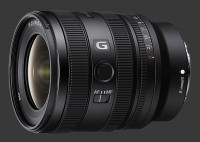
Sony FE 16-25mm F/2.8G
Weatherproof
Sony E Mount Zoom
2024-04-16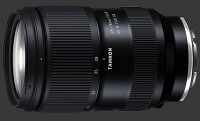
Tamron Di III 28-75mm F/2.8 VXD G2
Weatherproof
Nikon Z Mount Zoom
2024-03-28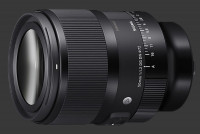
Sigma A 50mm F/1.2 DG DN
Weatherproof
Sony E Mount Prime Lens
2024-03-27
Sigma A 50mm F/1.2 DG DN
Weatherproof
Leica L Mount Prime Lens
2024-03-27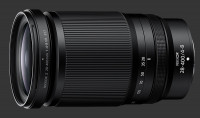
Nikkor Z 28-400mm F/4-8 VR
Stabilization & Weatherproof
Nikon Z Mount Zoom
2024-03-27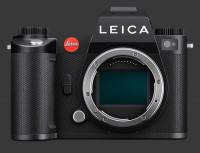
Leica SL3
60 Megapixels Mirrorless
Leica L Lens Mount
Built-in Stabilization
Weatherproof down to -10C
2024-03-07
Updates
2024.04.03

Fujifilm X-T5 Review
Newest Fujifilm flagship boasting a 40 MP APS-C sensor, 5-axis IBIS with 7-stop efficiency, 15 FPS continuous drive, 6.2K Video capture, dual control-dials and dual SDXC UHS-II slots in a sturdy weatherproof and freezeproof body.
2023.11.20

Best Digital Cameras of 2023
Find out which are the Best Digital Cameras of 2023. All the new Mirrorless Digital Cameras from entry-level to high-end professional.
2023.07.10

Fujifilm X-H2 Review
40 Megapixels APS-C Hybrid Mirrorless Digital Camera with 7-stop IBIS. Fastest shutter ever and 8K video capture. Large builtin EVF with 0.8X magnification and 5.8 MP, plus an Eye-Start Sensor. Packed with features and large number of controls in a weatherproof and freezeproof body.
2023.05.07

Sony FE 20-70mm F/4G Review
Review of the unique Sony FE 20-70mm F/4G lens. The optical zoom of this lens spans ultra-wide-angle and medium focal-length coverage, making it one of the most versatile Full-Frame lenses on the market.
2023.01.15

Huion Inspiroy Dial 2 Review
Review of the Huion Inspiroy Dial 2 tablet, a medium sized drawing surface with dual dials and customizable buttons. Connects via USB-C or Bluetooth 5.0 with Windows, Linux and Android support.
2022.12.08

How to Pack for a Photo Trip
Find out how to pack for a travel photography trip, carry your gear safely while meeting airline regulations.
2022.11.13

Best Digital Cameras of 2022
The best digital cameras of 2022. A short list of the most outstanding models in their respective categories. Choose one for yourself or as a gift.
2022.09.21

Pentax DA* 60-250mm F/4 SDM Review
Review of the Pentax DA* 60-250mm F/4 SDM, the constant-aperture telephoto zoom with the highest zoom-ratio on the market.
2022.09.20

Pentax DA* 50-135mm F/2.8 SDM Review
Review of the Pentax DA* 50-135mm F/2.8 SDM, the lightest professional telephoto zoom native to the K-mount.
2022.09.10

Pentax DA* 11-18mm F/2.8 DC AW Review
Review of the Pentax DA* 11-18mm F/2.8 DC AW, the widest professional ultra-wide zoom native to the K-mount.
2021.11.24

50 Gifts Under $50 For Photographers in 2021
50 Gifts photographers will love. All for under $50 USD. 2021 Edition.
2021.11.17

Best Digital Cameras for 2021
Neocamera shows which are the very best Digital Cameras for 2021 in every category: Mirrorless, DSLR, Premium Compact, Ultra-Zoom and Rugged.







